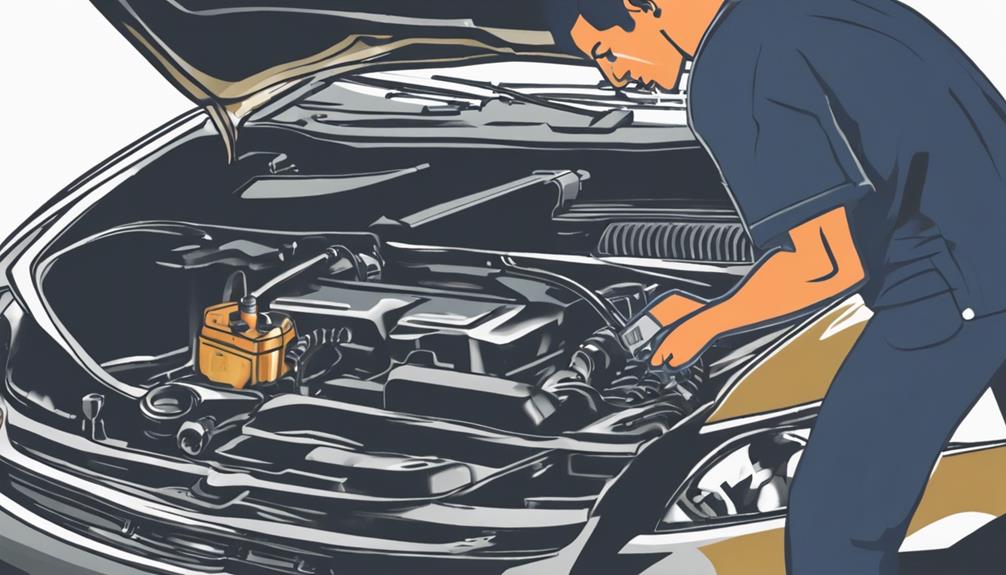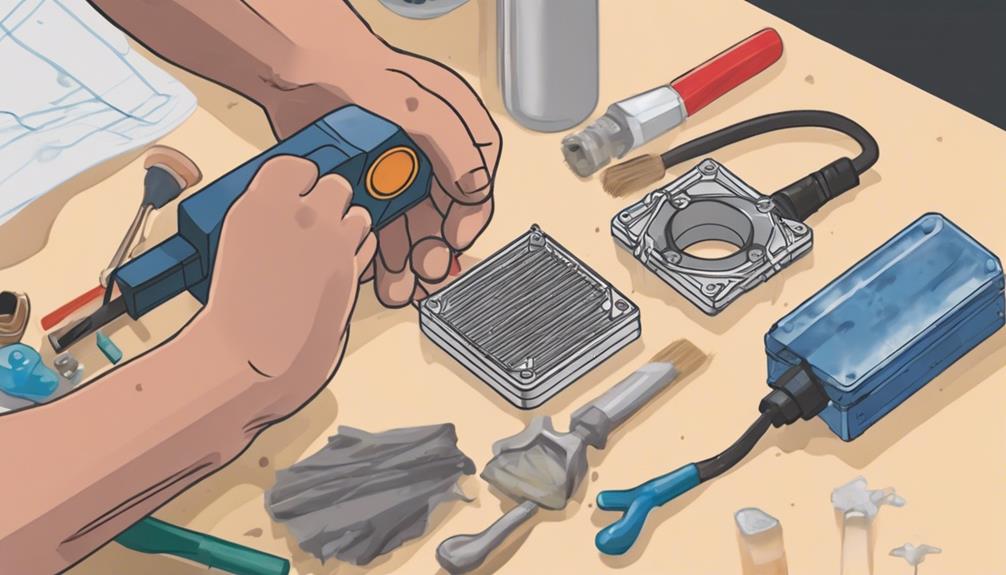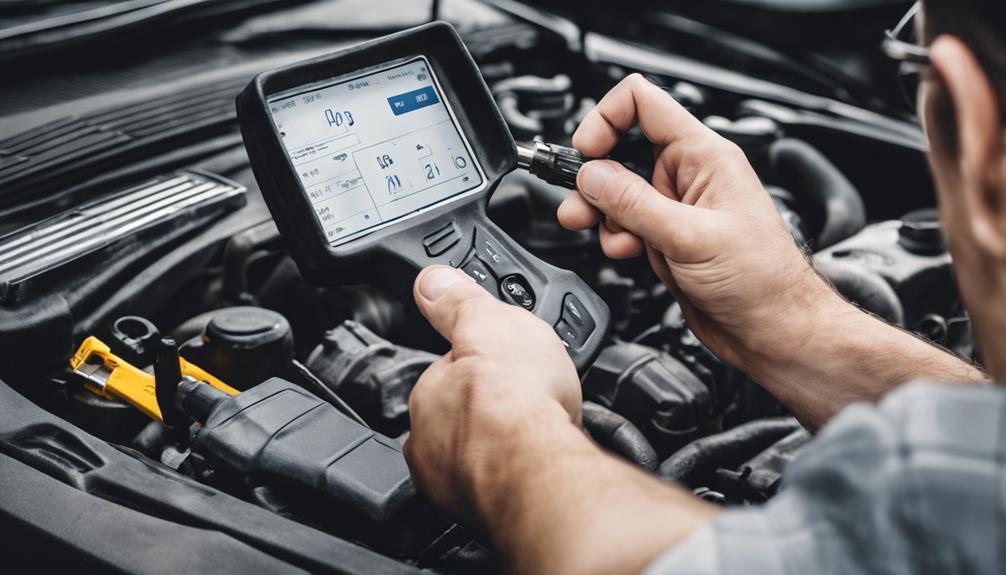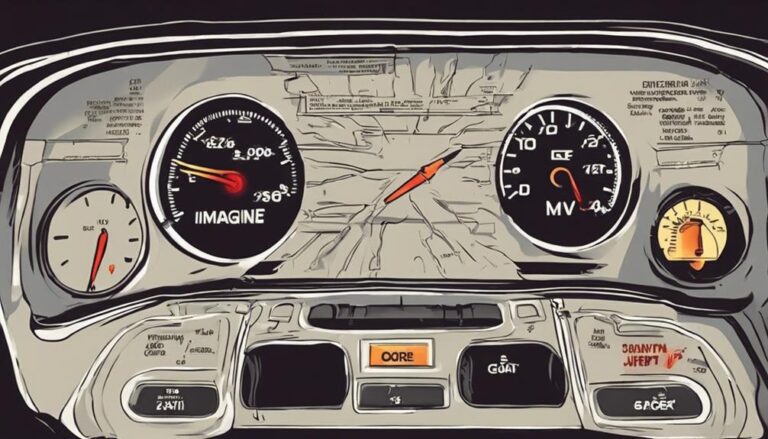Quick DIY Fixes for Check Engine Light
When the check engine light flickers on in your car, it's like a warning sign flashing in the distance, hinting at potential trouble ahead.
But fear not, as there are quick DIY fixes that might just save the day. These simple solutions could be the key to resolving the issue swiftly and without breaking the bank.
Stay tuned to uncover how a few easy steps could have your car running smoothly again in no time.
Key Takeaways
- Tighten gas cap regularly to prevent check engine light issues.
- Replace faulty oxygen sensors to improve fuel economy and reset light.
- Maintain spark plugs for efficient combustion and fuel economy.
- Clean or replace mass airflow sensor for optimal engine performance.
Check Engine Light Diagnosis Overview
To effectively diagnose the cause of a check engine light, begin by retrieving the diagnostic trouble codes using an OBD-II scanner. These diagnostic tools are essential for identifying the specific issue triggering the light. Common error codes such as P0300 for misfires or P0420 for catalytic converter inefficiency can give you a starting point for troubleshooting.
When interpreting the codes, keep in mind that they indicate a problem within the vehicle's systems. Understanding the DTCs is crucial for efficient diagnosis and repair. AutoZone provides code readers that can help you interpret and understand check engine light codes better.
DIY Fix: Tighten or Replace Gas Cap
If your check engine light is on, a quick DIY fix to consider is tightening or replacing the gas cap. A loose or faulty gas cap is a common culprit for triggering the check engine light. The gas cap plays a crucial role in maintaining the proper pressure within the fuel system and preventing fuel evaporation. Ensuring that the gas cap is securely tightened after refueling is essential for the integrity of your vehicle's fuel system.
Regular gas cap maintenance is key to preventing issues with your vehicle's fuel system. Ignoring a loose gas cap can lead to fuel evaporation, which not only wastes fuel but can also cause potential engine problems. By checking and tightening the gas cap regularly, you can help maintain the efficiency and performance of your vehicle while avoiding unnecessary trips to the mechanic.
DIY Fix: Check and Replace Oxygen Sensor

Consider inspecting and, if necessary, replacing the oxygen sensor as a DIY fix for addressing a triggered check engine light.
Oxygen sensors play a crucial role in monitoring oxygen levels in the exhaust system to optimize fuel efficiency and reduce emissions. When faulty, they can trigger the check engine light, leading to decreased fuel economy and increased emissions.
To address this issue, start by testing and troubleshooting the oxygen sensor. Identify its location in the exhaust system, typically near the catalytic converter or exhaust manifold. The removal process involves using basic tools to disconnect the sensor's electrical connector and unscrewing it from the exhaust pipe.
Once the new sensor is installed, clear the error codes to reset the check engine light. Regularly checking and replacing oxygen sensors can help maintain optimal engine performance and prevent potential damage, all while saving on labor costs at a repair shop.
DIY Fix: Inspect and Replace Spark Plugs
Inspecting and replacing spark plugs is a crucial maintenance task to ensure optimal engine performance. Spark plugs play a vital role in the combustion process by providing the spark needed for ignition. Over time, spark plugs can wear out, leading to issues such as misfires and decreased fuel efficiency.
By regularly maintaining and replacing spark plugs, you can improve engine performance and prevent potential problems. When inspecting spark plugs, look for signs of wear, such as erosion or carbon buildup. Replacing spark plugs is a relatively simple and cost-effective DIY task, with a set typically ranging from $10 to $20.
This maintenance task can help prevent check engine light triggers related to ignition system issues. Stay proactive with spark plug maintenance to keep your engine running smoothly and efficiently, ensuring optimal performance and fuel economy.
DIY Fix: Clean or Replace Mass Airflow Sensor

To maintain optimal engine performance, cleaning or replacing the mass airflow sensor is a key DIY task that can resolve issues related to air intake and fuel mixture. The mass airflow sensor plays a crucial role in measuring the amount of air entering the engine, ensuring the proper fuel-air mixture for combustion.
If you experience symptoms like rough idling, poor acceleration, or decreased fuel efficiency, the mass airflow sensor might be dirty or malfunctioning. Start troubleshooting by cleaning the sensor with specialized cleaner spray to remove any dirt or debris that could be affecting its performance. In many cases, this simple cleaning process can solve the problem.
However, if the issues persist, it's recommended to replace the mass airflow sensor with a new one to restore proper engine function. Regular maintenance of this sensor is essential to prevent check engine light triggers and to guarantee your engine operates at its best.
Frequently Asked Questions
Can You Fix a Check Engine Light Yourself?
You can fix a check engine light yourself by performing DIY diagnostics. Common triggers like a loose gas cap or faulty oxygen sensors can often be resolved with basic repairs. Addressing issues promptly can prevent further damage.
How Do You Force Clear the Check Engine Light?
To force clear the check engine light, you can use an OBD2 scanner to clear the trouble codes. Remember, merely clearing codes without addressing the underlying issue may lead to the light reactivating. Follow troubleshooting tips for a lasting fix.
How Do You Reset the Check Engine Light With a Gas Pedal?
To reset the check engine light using the gas pedal method, turn the key to 'On'. Quickly press the gas pedal five times within five seconds. Wait for the light to flash and turn off. Consult your manual for troubleshooting tips.
How Do I Fix My Engine Warning Light?
When fixing your engine warning light, follow these troubleshooting tips. Common causes include a loose gas cap, faulty oxygen sensors, dirty MAF sensor, misfires from bad spark plugs, and a failing catalytic converter.
Conclusion
In conclusion, taking quick DIY fixes for a check engine light can save you time and money.
For example, imagine driving down the highway when suddenly your check engine light comes on. By tightening your gas cap, you could easily resolve the issue and continue your journey without any further disruptions.
Remember, proactive maintenance and addressing issues promptly can keep your vehicle running smoothly.







